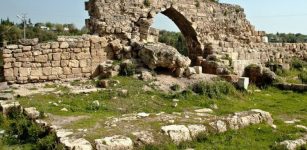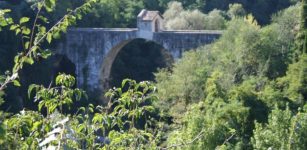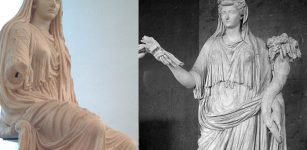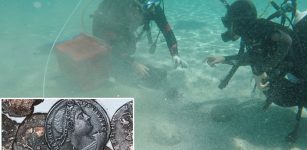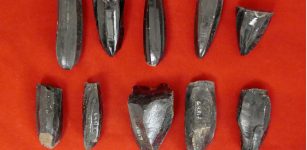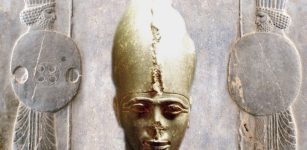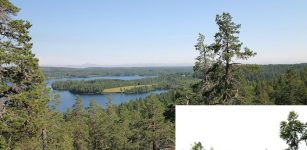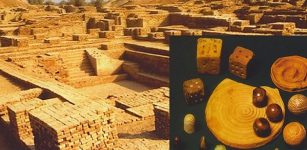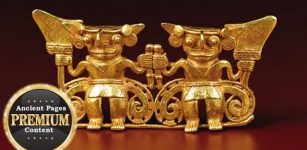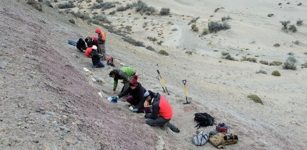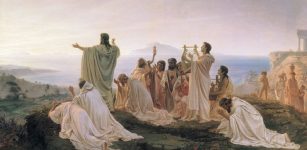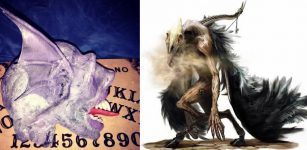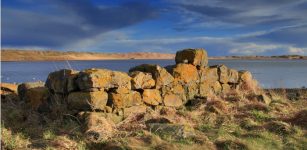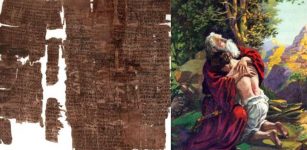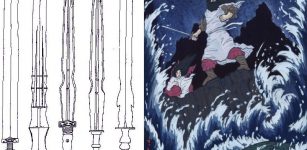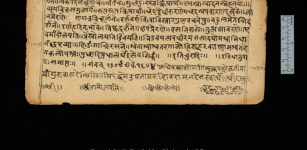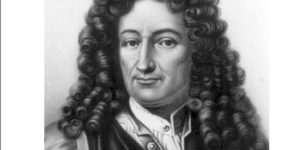Depictions Of Two Biblical Heroines Unearthed In Ancient Synagogue, Huqoq In Galilee, Israel
Conny Waters - AncientPages.com - While excavating the synagogue in the ancient Jewish village of Huqoq, on the northwest shore of the Sea of Galilee, archaeologists discovered a beautiful mosaic floor, which dates from the late fourth—early fifth century C.E., and depicts fragments showing Jael and the prophetess Deborah.
BYU students working on the Huqoq Excavation Project and archaeological field school during the 2022 season. Credit: Jim Haberman
As they brushed the last layer of dirt from a small section of mosaic on the synagogue floor, the archaeologists were momentarily baffled by the odd image beginning to emerge.
"Then we realized we were looking at the story of Jael pounding the stake through the head of Sisera the Canaanite," said BYU ancient scripture professor Matthew Grey.
"We brought out a phone and pulled up Judges 4 to read the story while we uncovered the scene."
Almost every summer since 2011, BYU faculty and students have joined a consortium of universities led by the University of North Carolina at Chapel Hill.
"This is the first time we've seen a depiction of the biblical heroines Deborah and Jael in ancient Jewish art," said project director and UNC professor Jodi Magness.
Situated in the southwest corner of the building just to the left of the synagogue's entrance, the panels highlight how the women helped save Israel through their gifts and intrepidity.
The Israelite commander Barak depicted in the Huqoq synagogue mosaic. Several BYU students were part of the team to help excavate at the ancient Jewish village site. Credit: Jim Haberman
One patch shows Deborah sitting under her palm tree, giving instructions to the Israelite general Barak to guide her people in battle (Judges 4:4–10). Below that, another patch shows Jael driving a tent stake through Sisera's temple, taking out the Canaanite general to help Israel defeat their enemy (Judges 4:17–22).
Experts are still early in the process of analyzing the mosaics' significance, and their findings have not yet been published. But the artwork offers intriguing hints about the people who gathered in the synagogue about 1,600 years ago.
"It's a fascinating choice of scenes to depict, but this synagogue congregation clearly found significant meaning in the stories of Deborah and Jael," Grey said. The mosaics fit thematically with others the team has found as they've systematically worked their way around the floor: Samson delivering Israel from the Philistines, Noah's Ark, the drowning of Pharaoh's army in the Red Sea.
Image of a fox eating grapes in a Huqoq synagogue mosaic. Credit: Jim Haberman
"This is a Jewish community apparently looking back on biblical episodes in which the God of Israel showed His power to deliver Israel from bondage. It may be that as a minority group in the Byzantine Empire, they wanted to remember those episodes in their past to nurture hope that in the future, God would again deliver them from what they perceived as foreign occupation."
The discoveries from this season at Huqoq are the latest offering from "an archaeological site that just keeps giving in unexpected ways," Grey noted.
When the group first began digging more than a decade ago, they had no idea they would find the elaborate mosaics sprawled across the floor. Jewish figural art is relatively rare in synagogues of this time, possibly because of strict interpretations of the second commandment forbidding "graven images" (Exodus 20:4–6).
 Team of BYU students working on the Huqoq Excavation Project and archaeological field school during the 2022 season: (left to right) Serena Wilson, Calan Christensen, David Eastley, Allyson Huffmire, Jared Corbett, Lea Schade, Prof. Matthew Grey, and Isaac Richards. Image credit: Jim Haberman
Team of BYU students working on the Huqoq Excavation Project and archaeological field school during the 2022 season: (left to right) Serena Wilson, Calan Christensen, David Eastley, Allyson Huffmire, Jared Corbett, Lea Schade, Prof. Matthew Grey, and Isaac Richards. Image credit: Jim Haberman
"But there were some synagogue congregations, and apparently Huqoq was one of them, that did feel comfortable depicting humans and animals," Grey said, noting that the mosaics even incorporate artistic styles popular at the time, with biblical figures wearing Roman clothing and biblical scenes referencing Greek mythology. "This cultural fusion at Huqoq reflects a fascinating diversity within the Jewish community of that period."
Operated as an archaeological field school, the excavation at Huqoq also provides students with extraordinary experiential learning opportunities. The seven BYU students who went this year developed important archaeology skills as they picked, hoed and sifted through dirt, took elevations and kept diligent records. Some worked with the mosaics, while others excavated a monumental courtyard immediately east of the synagogue that was discovered this season, with Grey as the area supervisor.
"Every day we were unearthing what had been forgotten so long ago," said BYU archaeology student Lea Schade. "Someday people will be reading about Huqoq in textbooks and visiting the site as tourists."
"There is nothing like waking up at four a.m., putting on a wide-brimmed hat and hiking boots, and marching through the darkness to the excavation site as the sun rises over the Sea of Galilee," added BYU communications student Isaac Richards. "It's one thing to visit ancient sites in the Holy Land, but it is another thing to dig up a place that will become a national historic site. It really was a physical, intellectual, spiritual and historical adventure of gigantic proportions."
Written by Conny Waters - AncientPages.com Staff Writer




